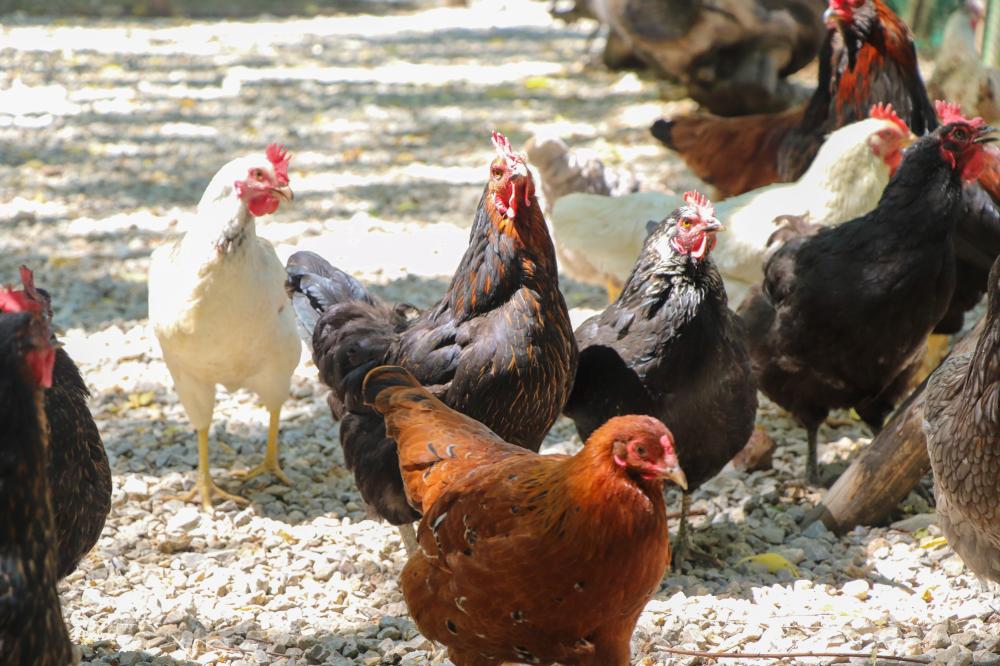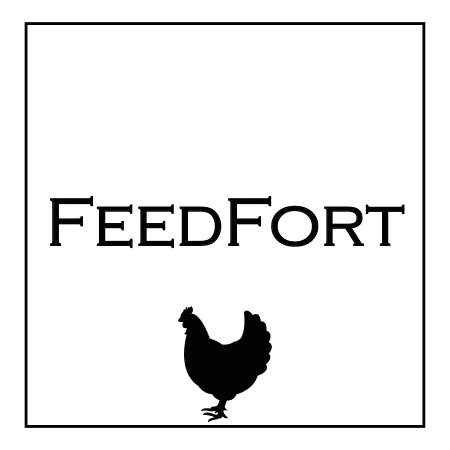Livestock Feeding System

Exploring Livestock Feeding System
At FeedFort, we stand at the forefront of innovative solutions designed to revolutionize how poultry owners manage their feeding routines. Our journey into the development of an automatic chicken feeder was sparked by a simple but persistent problem: how to keep feed safe and secure from rodents, ensuring our chickens receive the nutrition they need without the added worry of disease, mites, or spoilage. The Livestock Feeding System is a critical component of any successful poultry operation, influencing not only the health and productivity of the livestock but also the operational efficiency and cost-effectiveness of the farm.
Component vs. Total Mixed Ration Feeding
Understanding the Basics
In delving into the Livestock Feeding System, it’s crucial to differentiate between two predominant feeding strategies: component feeding and Total Mixed Ration (TMR). Our development process led us to examine both methods closely, recognizing that each has its unique benefits and challenges. While component feeding involves providing separate feed ingredients to the livestock, allowing for individual adjustments, TMR combines all components into a homogenous mix, ensuring consistent nutrient intake across the flock.
The Role of Technology in Feeding
Technology plays a pivotal role in modernizing and optimizing these systems. Our FeedFort feeder, for instance, leverages photocell technology to adapt to the day’s light conditions, automatically safeguarding feed with meticulous precision. This not only enhances the efficiency of feeding routines but also significantly reduces the risk of contamination and waste.
Advantages of Automated Feeding
Security and Disease Prevention
The paramount advantage of an automated Livestock Feeding System, such as FeedFort, lies in its ability to secure feed from unwanted pests. Rodents are notorious for spreading disease and causing feed spoilage. By ensuring that feed is accessible only to our chickens, we markedly reduce the risk of disease transmission, thereby enhancing the overall health and vitality of the flock.
Efficiency and Cost Savings
An automated system also brings unparalleled efficiency to the feeding process. The slow descent feature of our feeder minimizes spillage and waste, translating into significant cost savings over time. This efficiency allows poultry owners to allocate their resources more effectively, investing in the growth and expansion of their operations rather than contending with preventable losses.
Considering Feed Quality
The quality of feed plays an indispensable role in the Livestock Feeding System. High-quality feed can substantially improve livestock health and productivity. Hence, our focus at FeedFort extends beyond just safeguarding the feed; we also emphasize the importance of utilizing premium feed that meets the nutritional needs of the chickens. Implementing an automated feeding system like FeedFort ensures that the integrity of high-quality feed is maintained, free from contamination or degradation.
Challenges and Solutions
Overcoming Common Feeding System Hurdles
One of the inherent challenges in managing a Livestock Feeding System is dealing with environmental variables, such as changes in weather, that can impact feed quality and availability. Our design process included extensive testing to ensure that FeedFort could withstand various environmental conditions, ensuring consistent operation and feed protection, rain or shine.
Adapting to Livestock Needs
Another challenge lies in adapting the system to meet the diverse and changing needs of the livestock. This requires a nuanced understanding of nutritional requirements throughout different life stages and conditions. Our solution enables poultry owners to make precise adjustments to feeding schedules and quantities, ensuring optimal nutrition at all times.
The Future of Livestock Feeding
The Livestock Feeding System is on the cusp of significant transformation, driven by advancements in technology and a growing awareness of the importance of sustainable farming practices. At FeedFort, we are committed to continuous innovation, seeking new ways to enhance the efficiency, reliability, and sustainability of our feeding solutions. As we look to the future, we envision a landscape where automated feeding systems like ours play a crucial role in empowering poultry owners to achieve higher productivity, improved animal health, and greater operational efficiency.
Personal Experience and Professional Insight
In my years working with FeedFort, I’ve had the privilege of witnessing firsthand the profound impact that an effective Livestock Feeding System can have on a poultry operation. From the joy of customers who no longer have to rise at dawn for feedings to the relief of knowing their feed investment is protected from pests, the benefits are tangible and multifold. This journey has reinforced my belief in the power of innovation to solve age-old challenges, inspiring a continuous quest for improvement and excellence in everything we do.
Embracing Innovation in Livestock Feeding
In conclusion, the Livestock Feeding System is a foundational aspect of any successful poultry operation. Through the development and implementation of technologies like FeedFort, we can address many of the challenges inherent in traditional feeding practices, paving the way for a future where precision, efficiency, and animal welfare are paramount. By embracing innovation and striving for continual improvement, we can ensure that our poultry operations are not only sustainable but also thriving in an ever-evolving agricultural landscape.

Understanding Livestock Feeding Systems
When it comes to modern farming practices, particularly in poultry operations, the evolution of feeding systems is quite remarkable. At FeedFort, we’ve engineered an automatic chicken feeder that epitomizes the progress in this area, notably for its role in protecting feed from rodents and minimizing waste. Our system is not just a piece of farming equipment; it’s an integrated solution designed to enhance the efficiency, health, and cost-effectiveness of poultry operations.
What are the benefits of Total Mixed Ration (TMR) feeding over component feeding in poultry farms?
Comparing Total Mixed Ration (TMR) to component feeding is like comparing a tailor-made suit to off-the-rack options; both serve a purpose, but one is distinctly customized. In TMR feeding, all dietary components are mixed thoroughly to ensure uniformity, offering a balanced diet in every bite. This method reduces selective eating, promotes consistent nutrient intake, and can lead to better flock health and productivity. From our experience at FeedFort, we’ve noticed that farms using TMR often report improved feed conversion ratios and more uniform bird growth. However, it requires meticulous planning and understanding of nutritional needs.
How does technology enhance livestock feeding practices?
Technology, particularly in our case with the advent of automated chicken feeders like FeedFort, transforms feeding practices from a labor-intensive procedure into a streamlined, precise operation. The photocell technology we use adapts to the day’s light conditions, automatically adjusting the feeder’s operation to protect against feed spoilage or pest invasion. This ensures that chickens have access to fresh feed without the risk of contamination or waste. It’s a game-changer that allows farmers to focus on other aspects of their operations, confident in the efficiency and effectiveness of their feeding routines.
What are the main advantages of automated feeding systems?
Automated feeding systems, such as the one we’ve pioneered at FeedFort, offer a myriad of benefits. First and foremost, they secure feed from pests like rodents, which are not just a nuisance but a serious threat to flock health due to disease transmission. Our system also minimizes feed waste through a slow descent feature, ensuring that feed is dispensed in manageable amounts and significantly reducing spillage. This efficiency translates directly into cost savings, enabling farmers to allocate resources more effectively. The peace of mind knowing that your feed is protected 24/7 and your flock is eating well, without the extra labor, is invaluable.
Why is feed quality crucial in livestock feeding systems?
Quality in, quality out – this adage holds especially true in the context of livestock feeding. The quality of feed plays a pivotal role in the health, productivity, and growth of the flock. High-quality feed enhances nutritional intake, supports immune function, and promotes optimal growth rates. At FeedFort, we’ve seen firsthand how good feed quality, combined with our automated feeding system, can drastically improve operational efficiency and flock health. It’s about maintaining the integrity of the feed from the moment it’s produced until it reaches the chickens, ensuring they receive the best possible nutrition.
How does FeedFort help overcome common challenges in livestock feeding systems?
One significant challenge in livestock feeding is dealing with environmental variables, such as weather changes, that can impact feed quality. Our FeedFort feeding system is designed to be robust, capable of withstanding diverse environmental conditions to deliver consistent performance year-round. Additionally, we tackle the challenge of adapting to the varying nutritional needs of livestock through flexible programming features, allowing for precise adjustments to feeding schedules and quantities. Our aim is to ensure that each bird receives the optimal amount of nutrition regardless of external factors or internal changes within the flock.
What does the future hold for livestock feeding practices?
The future of livestock feeding is bright, with technology playing a leading role in shaping more efficient, sustainable, and productive farming practices. At FeedFort, we are continuously innovating, seeking out new ways to refine and enhance our automatic feeding system. Sustainable farming practices, combined with technological advancements, hint at a future where precision feeding becomes the norm, waste is significantly reduced, and animal welfare is prioritized. With an eye towards these goals, we’re committed to contributing to a future where our feeding solutions help poultry operations thrive in harmony with the environment.
How does personal experience shape innovation at FeedFort?
Our journey at FeedFort is deeply personal. It began with a simple objective: to solve the age-old problem of feed security and efficiency in poultry operations. This journey, fueled by our firsthand experiences with the frustrations of traditional feeding routines, has been a driving force behind our innovation. Each challenge we’ve encountered, from early morning feedings to combating feed spoilage, has provided invaluable insights that have shaped the design and functionality of our FeedFort feeder. Our commitment to solving real-world problems with practical, innovative solutions is what sets us apart and drives us forward.
Why is it important to embrace innovation in livestock feeding?
Embracing innovation in livestock feeding is not merely a choice but a necessity for the future of farming. Innovations like our FeedFort system represent a leap towards more efficient, secure, and sustainable farming practices. By reducing waste, enhancing feed security, and improving operational efficiency, we’re not just solving today’s problems; we’re preparing for tomorrow’s challenges. Innovating in feeding practices allows us to better meet the nutritional needs of livestock, improve animal welfare, and reduce the environmental impact of farming operations. It’s a commitment to continuous improvement and sustainability that benefits everyone involved.
Resources
- University of Minnesota Extension – Beef Cattle Nutrition – Learn about the nutritional needs of beef cattle and how to ensure proper feeding for optimal health and productivity.
- University of Minnesota Extension – Small Animal Nutrition – Explore resources on feeding small animals, including poultry, to help you make informed decisions about their diet.
- U.S. Food and Drug Administration – Animal Feed Nutrition – Access information on animal feed regulations, safety, and nutrition guidelines to ensure the health and well-being of your livestock.
- eXtension – Feeding Strategies to Improve Livestock Performance – Discover effective feeding strategies to enhance the performance and productivity of your livestock.
- U.S. Department of Agriculture – Animal Health – Find resources on maintaining animal health, including feeding practices, to prevent diseases and ensure overall well-being.

